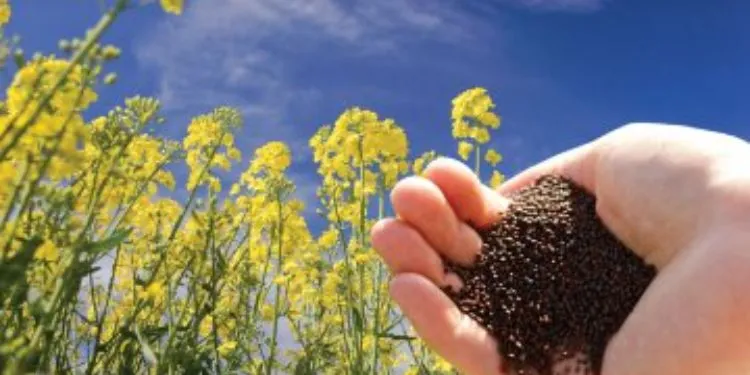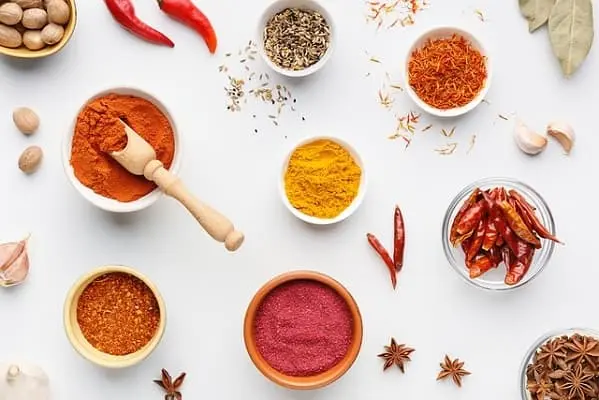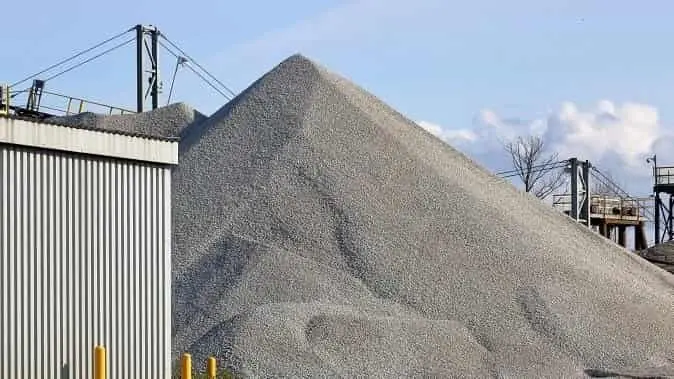Oilseed crops are generally one of the major crops in the world. This crop is a globally leading provider of specialty and premium quality oils for natural food, nutritional products, and premium snack foods. The crops commonly used to extract oil are oats, corn, soybeans, cotton, camelina, mustard, sunflower, groundnut, safflower, oil palm, rapeseed, olive, and coconut.
Oilseeds produced in most countries are mainly used for oil extraction. However, these crops’ meal, oil, and hull were integrated into animal and human diets because of their nutritional value.
Most oilseed food contains essential amino acids and proteins that are good for human well-being and overall health. In addition, they are a good source of energy containing carbohydrates and proteins.
When using heat-treated oilseeds or oilseed meal, it is essential to ensure that adequate heat treatment is used to provide maximum protection against protein inactivation and ruminal protein degradation of naturally occurring enzymes that aid indigestion.
India is one of the significant oilseeds producers and suppliers of edible oils. The largest vegetable oil producers are the United States, China, Brazil, and India (4th leading producer). The oilseed financial records for 3% of the Gross National product, 13% of the Gross Cropped Area, and 10% cost of all agricultural commodities.

Oilseed crops require agro-ecological weather conditions to grow some of the popular edible oilseeds, such as soybean, groundnut, rapeseed, sunflower, mustard, safflower, niger, and sesame. According to the 2021 to 2022 crop year report, soybeans were the world’s most produced oilseed. The United States is the leading single producer of soybeans.
In that year, about 364 million metric tons of soybeans were produced globally. It is highly produced by China worldwide. The significant rapeseed producers are the European Union, China, Canada, India, and Ukraine. China tops the list for peanuts and Ukraine for sunflowers. Learn which country produces the oilseed in large quantities in the world.
Top Countries for oilseeds Production in World
1. China

China is the top 1 country in terms of oilseeds export volume. As of 2020, oilseeds export volume in China was 709,482 tonnes which are 50.17% of total oilseeds export volume. Therefore, it has a 100.00% share in the top 2 countries (the others are China). In 2020, the overall oilseeds export volume was estimated at 1.41 million tonnes. In marketing year 21/22, China’s soybean imports are estimated to reach a record 100 MMT, which was increased from the previous 20/21 MMT to meet feed demand from the poultry and livestock sector.
Meal, oilseeds, and oil demand and production are driven to sustain a moderate growth trend on solid consumer demand for vegetable oil, animal protein, and soy-based foods. China’s Cargill is one of the major processors and suppliers of oilseeds and grains in China, offering quality oilseeds, fats, and grains. It currently has four oilseeds crush plants in China, 1 in Jiangsu Province and 3 in Guangdong province.
2. USA

The oilseeds sector is an essential and robust participant in the economy of the United States. Oilseeds and oilseed products strengthen America’s trade balance and provide cost-effective solutions to the industrial and nutritional needs of a rapidly growing world population.
The USA is another leading country in oilseed production. The major oilseed crops in the country are sunflower seed, cottonseed, soybeans, rapeseed, canola, and peanuts. Out of all, soybeans are the most dominant oilseed crop in the US, estimated for around 90% of US oilseed production. Here the plantation of soybeans is done in May and early June and harvested in Late October or November.
US oilseed production for the current year (2022-2023) is 132.7 million tonnes, down 3.9 million tonnes from the previous month, partially offset by sunflower seed growth for peanut, canola, soybean, and cottonseed.
According to a report, the US produces a high amount of certain oilseeds, such as peanut, rapeseed, cottonseed, copra, sunflower, and oil, such as peanut, soybean, sunflower seed, palm, cottonseed, palm, etc.
3. Russia

Russia’s Oilseed production has seen significant growth over recent years. The central region of Russia where the oilseed is highly produced are the Northern and Southern parts of the black soil region, Volga, and South Russia region. Russia is one of those countries that have increased both yields and acreage of oilseeds. Sunflowers are an essential oilseed grown throughout the country.
As per a report, sunflower seed occupied the most significant area planted for oilseeds in Russia, at approx 9.8 million hectares in 2021. On the other hand, the region planted for soybeans typically increased, spotted at around 3.1 million hectares in the latest year.
In the 2021-2022 marketing year, Russia’s soybean production was estimated to overall 4.4 million tonnes and hit back from the flooded crops from the last year of 4.3 million tonnes. In recent years, a package of supply restrictive measures targeted at the oilseeds marketed is expected to restrain the growth trend in oilseeds production in Russia.
According to the 2021-2022 Marketing year, oilseed production in Russia is spotted to grow at 22.4 million, soybean production at 4.4 Million metric tonnes, sunflower oilseed production will reach 15.5 million metric tonnes, and rapeseed production spot 2.5 million metric tonnes. While soybean production is expected to reach 7.2 metric million tonnes, meal production can reach 10 million metric tonnes. In 2021-2022, fish meal production in Russia was estimated to reach 150 million metric tonnes.
4. India

India is the 4th largest oilseeds producer worldwide, with 20.8% of the overall area under cultivation, spotting for 10% of global production. India produces soybean, groundnut, niger seed, sunflower, seasum, safflower, and mustard oilseeds. Due to modern technologies, oilseed production grew to 365.65 tonnes in 2020-2021 from 108.3 lakh tonnes in 1985-86.
The oilseed production in India has been increasing for 5 years. The country produced 365.65 lakh tonnes of oilseeds from 2020 to 2021, which was 10% higher than the previous year. From 2015-2016 to 20202-201, the CAGR of production was 7.7 percent. The production of these crops increased due to the establishment of several programs during the cluster, like a particular program on rapeseed and mustard and ruby demonstration of advanced technology by the Government of India.
The most famous oilseed-producing states in the country are Haryana, Andhra Pradesh, Tamil Nadu, Madhya Pradesh, UP, Rajasthan, and many others. Among all, Madhya Pradesh, Rajasthan, Gujarat, and Maharashtra lead a particular share of the overall production.
In 2021-2022, India’s groundnut exports was Rs US dollar 595 million. The country’s groundnut exports are typically extracted from Rajasthan and Gujarat. However, the Indian Government has taken multiple beneficial initiatives to boost the production of oilseeds throughout the country.
5. Canada

Canada is among the largest exporters and producers of oilseeds. In the 2021-22 marketing year, Canada’s overall production of oilseeds is estimated to reach 6% over the previous year, as per the report from the US Department of Agriculture’s Foreign Agricultural Service. The country is famous for producing soybean, canola, and sunflower seeds, and a greater area is planted for canola and the recovery of canola yields. With lower production and increased exports, the closing stock of canola for the marketing year 2020-2021 is estimated at 700 thousand MT, 2.4 million MT lower than the previous marketing year.
Overall, oilseed production, which comprises soybeans, canola, and sunflower seeds, is estimated to spot 26.58 million tonnes. Soybean production is expected to grow marginally and remains a 3rd of the size of canola production. Canada is the leading producer of canola around the world. The agriculture sector, significantly the canola market, contributes around $ 26 billion yearly to the national economy. In 2018, the country produced around 20 million tonnes of canola from over 23 million acres.
Conclusion
The information related to oilseeds is collected from trusted sources. However, as mentioned earlier, the above-listed countries are some of the leading producers producing the highest oilseeds.
Oil Seeds Production FAQs
Q. What are the most common types of oilseeds?
Ans: Common oilseeds include soybeans, sunflower seeds, canola (rapeseed), cottonseed, peanuts, and sesame seeds. These crops are grown for their oil-rich seeds.
Q. Where are oilseeds grown?
Ans: Oilseeds are cultivated in many parts of the world. The specific regions vary depending on the type of oilseed. For example, soybeans are extensively grown in the United States, Brazil, and Argentina, while sunflower seeds are prevalent in countries like Russia, Ukraine, and Argentina.
Q. What are the main uses of oilseeds?
Ans: Oilseeds are primarily used for oil production. The extracted oils are used in cooking, food processing, industrial applications (e.g., lubricants and biofuels), and cosmetics. The leftover meal after oil extraction is often used as animal feed.
Q. How are oilseeds planted and harvested?
Ans: Oilseeds are typically planted as crops in agricultural fields. The seeds are sown in rows, and the plants grow until they produce mature seeds. Harvesting is done when the seeds have reached the desired maturity. This process can vary depending on the type of oilseed.
Q. What are the key factors influencing oilseed production?
Ans: Factors influencing oilseed production include climate, soil quality, pest and disease control, agricultural practices, and the choice of oilseed crop. Weather conditions, in particular, play a significant role in determining yields.
Q. Are oilseeds genetically modified (GM) crops?
Ans: Yes, some oilseeds, such as soybeans and canola, have GM varieties. These genetically modified crops are engineered to resist pests or tolerate herbicides, which can improve yields and make cultivation more efficient.
Q. What is the oil extraction process for oilseeds?
Ans: The oil extraction process typically involves cleaning, crushing or pressing the seeds to release the oil, and then separating the oil from the solid components. Various methods are used, including mechanical pressing, solvent extraction, and cold-pressing for certain high-quality oils.
Q. What are the challenges in oilseed production?
Ans: Challenges in oilseed production can include adverse weather conditions, pests and diseases, fluctuating market prices, and the need for sustainable farming practices. Environmental concerns and market demand for specific types of oil also influence production.
Q. How important is oilseeds production for the global economy?
Ans: Oilseeds are crucial to the global economy, as they provide a significant source of vegetable oils for various industries. They also play a role in food security and trade, with many countries relying on oilseed exports or imports to meet their needs.
Q. What are some sustainable practices in oilseed production? Ans:
Ans: Sustainable practices in oilseed production include crop rotation, reduced pesticide and fertilizer use, conservation tillage, and the adoption of GM crops that require fewer inputs. These practices aim to minimize the environmental impact of oilseed farming.














